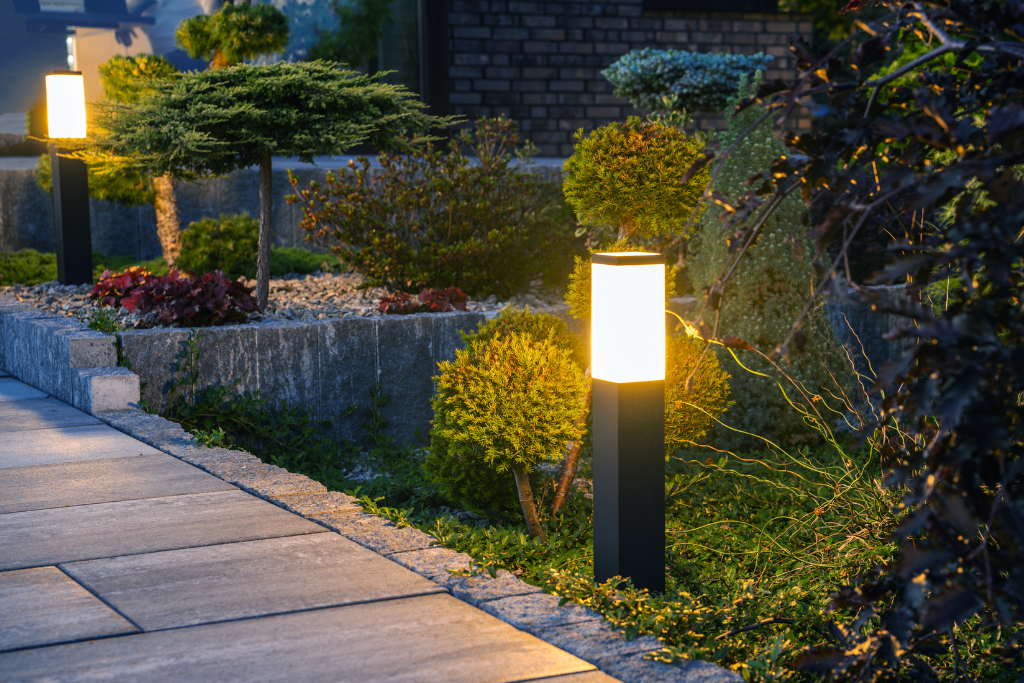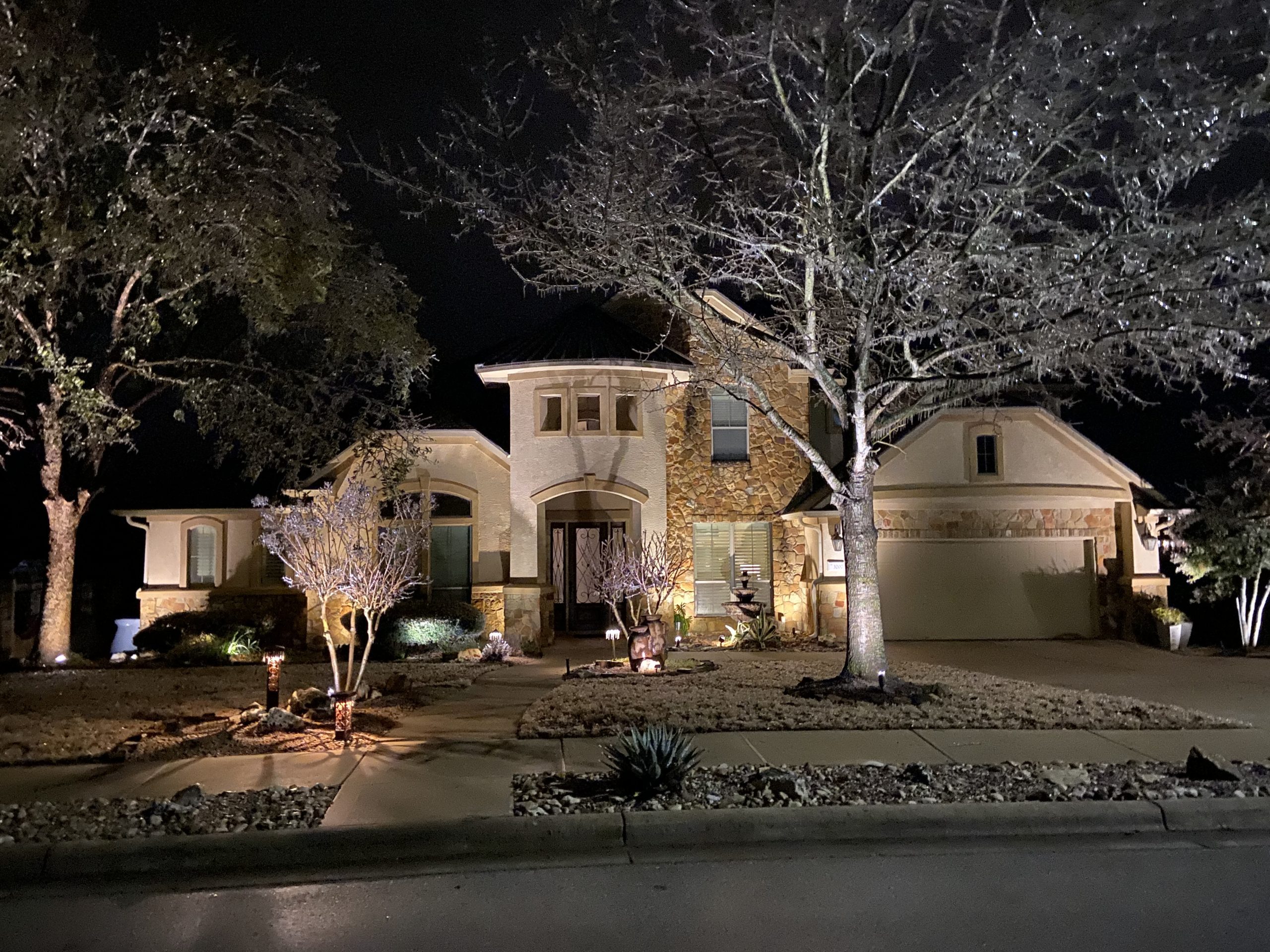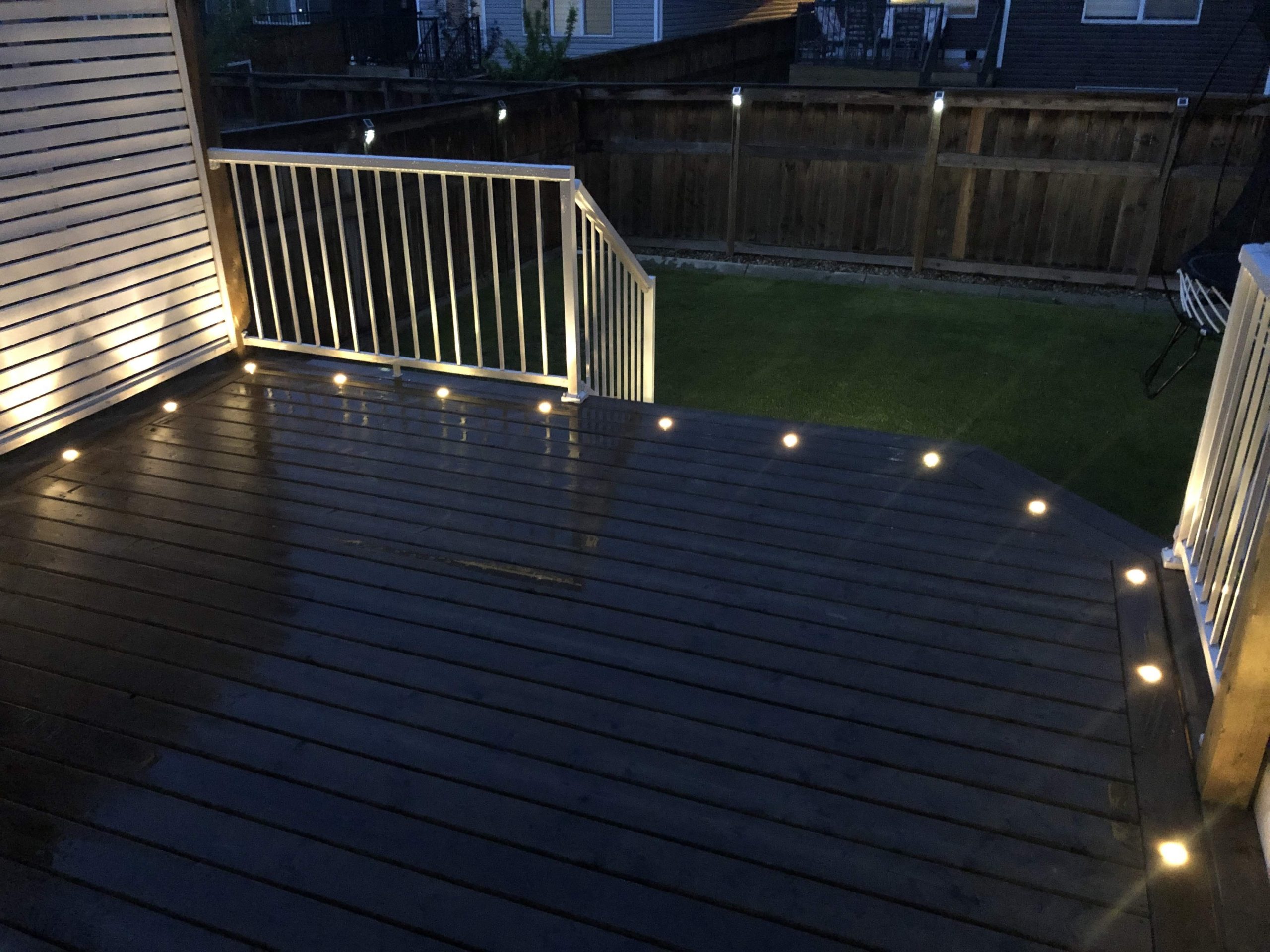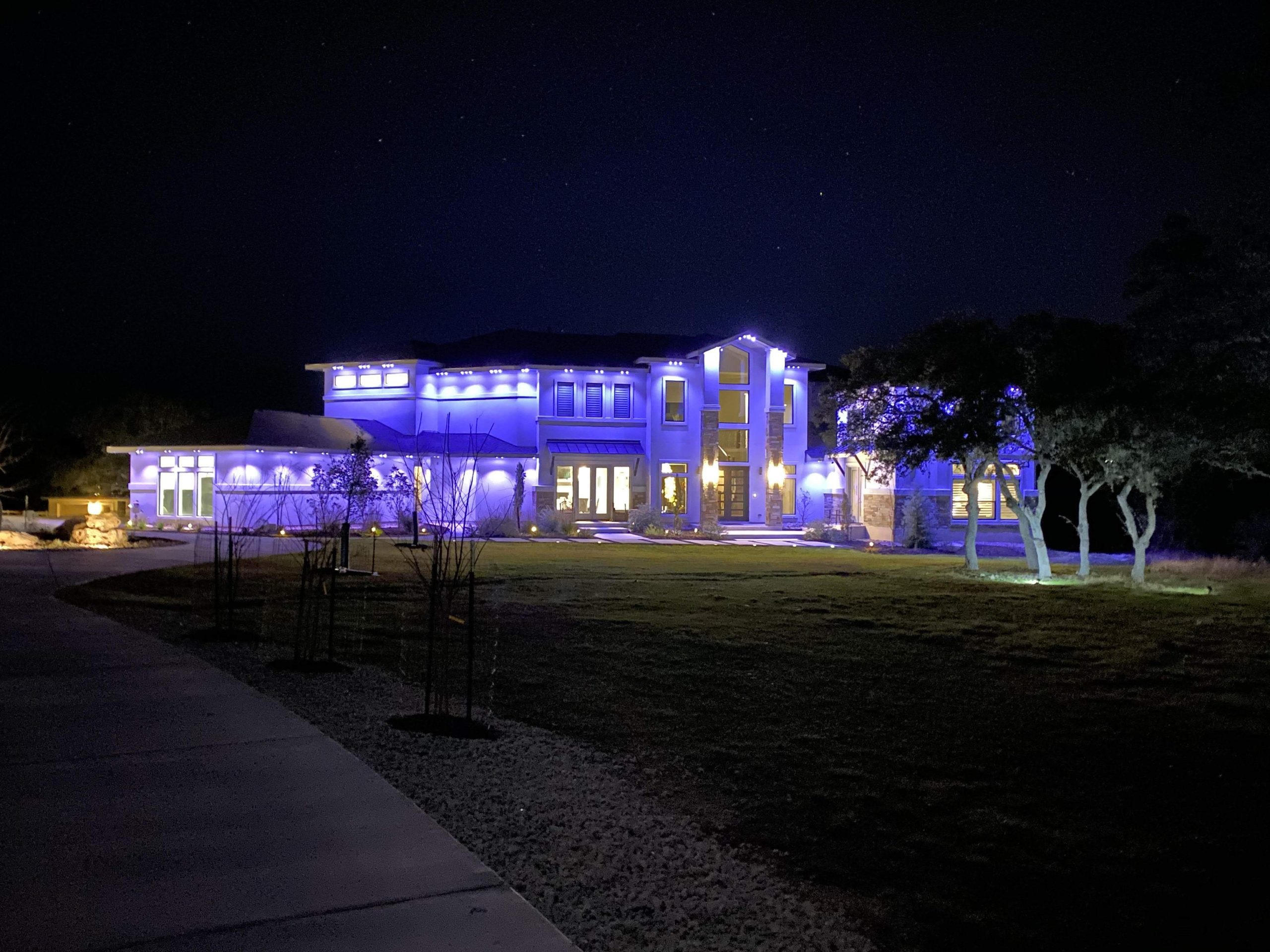Permanent outdoor lights add value beyond enabling brilliant lighting displays for your home. They add safety, security, and beauty to your home as well. The right lighting systems can completely transform your yard, garden, or driveway. But for many homeowners, the biggest concern is energy use and maintenance.
That’s where low voltage landscape lighting comes in. It gives you bright, beautiful light with lower power costs, safer installation, and a longer lifespan than traditional systems. Whether you’re designing a cozy backyard or lighting up your walkway, this guide will help you understand why energy-efficient landscape lighting is the best choice for your home.
What Is Low Voltage Landscape Lighting?
Low voltage landscape lighting works by reducing the power from your home’s electrical system (120 volts) down to 12 volts. This is done with a small device called a transformer, which converts the voltage safely.
Here’s why this matters:
- It’s safer: Because the voltage is lower, there’s less risk of shock or overheating.
- It’s energy efficient: You use less electricity to power your lights.
- It’s flexible: Low voltage lighting can easily be placed anywhere – along paths, around gardens, or highlighting your home’s architecture.
These systems use LED bulbs instead of halogen or incandescent ones. LEDs are the most energy-efficient type of outdoor light you can buy – they last longer, use less power, and shine just as bright.
Why Choose Energy-Efficient Outdoor Lighting?
Energy-efficient lighting isn’t just good for your utility bill – it’s good for your home and the planet. Here’s what makes it so beneficial:
- Lower energy bills: LEDs use up to 80% less electricity compared to traditional bulbs.
- Less maintenance: Long-lasting bulbs mean fewer replacements and less hassle.
- Durability: LED light fixtures are made with resistant materials that handle rain, snow, wind, and UV exposure.
- Eco-friendly: Reduced energy use lowers your carbon footprint.
When you choose energy-efficient outdoor light options, you’re investing in both style and sustainability.
The Best Types of Outdoor Lighting for Your Home
Outdoor lighting comes in many forms, each designed for a specific use. Here are a few popular types of outdoor fixtures you’ll want to consider:
Path Lights
Perfect for walkways, driveways, and garden paths. These small lights help guide your way while adding charm to your landscape.
Spotlights and Uplights
Use these to highlight trees, bushes, sculptures, or parts of your home’s exterior. They create visual depth and drama.
Floodlights
Ideal for security and wide coverage. Floodlights use broader beams to illuminate large areas like driveways or patios.
Garden Lights
Gentle, low-level lights designed to highlight plants and flower beds. Garden lights often create a cozy, peaceful glow.
Deck and Step Lights
Installed directly into stairs, decks, or walls to add both safety and beauty at night.
Each type of outdoor fixture works together to create a layered look – combining safety, functionality, and aesthetic appeal.
Why Low Voltage Systems Are the Smart Choice
Low voltage lighting isn’t just about saving energy – it’s about creating a reliable, flexible, and long-lasting system. Here’s how it stands out:
- Energy efficient: Uses less power without reducing brightness.
- Easy to install: Safer and simpler to work with than high-voltage wiring.
- Customizable: You can easily add or move fixtures as your yard design changes.
- Durable: Built with corrosion-resistant and weather-resistant materials to withstand the elements.
Over time, this means lower maintenance, fewer repairs, and consistent performance year-round.
How Energy-Efficient Landscape Lighting Saves Money
Switching to energy-efficient lighting is one of the smartest home upgrades you can make. Here’s why:
- Lower Energy Use – LEDs use a fraction of the power that traditional bulbs require, meaning smaller electric bills every month.
- Less Heat Output – LEDs stay cool, reducing wear on fixtures and preventing overheating.
- Longer Lifespan – While older bulbs might last a few thousand hours, quality LEDs can last 30,000 to 50,000 hours.
- Minimal Maintenance – Fewer burnouts mean you won’t be constantly replacing bulbs.
- Added Home Value – Professionally installed lighting increases curb appeal, which can boost your resale value.
In short, low voltage systems are a long-term investment that pay off through reduced costs and longer-lasting performance.
Designing the Perfect Outdoor Lighting System
Designing a great outdoor lighting system means balancing light placement, brightness, and energy use. Here are some simple tips to get started:
- Highlight key features: Use uplights or spotlights to draw attention to trees, gardens, or architectural details.
- Create safety lighting: Use path lights along walkways, driveways, and stairs.
- Avoid over-lighting: Too much light can cause glare and wash out your yard’s natural beauty.
- Use timers or motion sensors: Automating your lights saves energy by only using power when needed.
- Mix function and style: Combine path lights, garden lights, and accent lighting for a complete look.
For creative ideas, explore our guide to backyard color-changing string lights – a fun way to enhance ambiance while staying efficient.
Compared to Traditional Outdoor Lighting
When you compare modern low voltage landscape lighting to older, high-voltage systems, the advantages are clear:
| Feature | Low Voltage Lighting | Traditional Lighting |
| Energy Use | Highly energy efficient | Consumes more power |
| Safety | Safe for homeowners and pets | Higher risk of electric shock |
| Durability | Made with corrosion-resistant and weatherproof materials | Susceptible to rust and wear |
| Maintenance | Minimal upkeep | Frequent bulb replacements |
| Flexibility | Easy to adjust or expand | Fixed and harder to modify |
Durability and Weather Resistance
One of the biggest concerns with outdoor lighting is how it handles the elements. The best systems use resistant materials like powder-coated aluminum, stainless steel, or brass.
These materials are:
- Corrosion resistant to prevent rust and damage from humidity or salt in the air.
- Weatherproof, able to handle rain, snow, and wind.
- UV resistant, protecting finishes from fading under the sun.
Whether you live in a hot, humid climate or experience freezing winters, these light fixtures are built to last.
Everyday Benefits Beyond Illumination
Low voltage garden lights and path lights offer more than just illumination. They also:
- Increase security by lighting dark areas around your property.
- Enhance safety for guests walking at night.
- Boost curb appeal with elegant, welcoming light.
- Reduce light pollution with downward-facing fixtures.
- Provide versatility — adjust brightness or color depending on the occasion.
With modern systems, you can also integrate smart controls to schedule or dim lights using your phone or voice assistant.
FAQs
Q: Are low voltage landscape lights bright enough?
Yes! Modern LED path lights and garden lights produce excellent brightness while using much less energy than older bulbs.
Q: How long do energy-efficient lights last?
Most quality LEDs can last up to 10 years or more, depending on use and weather conditions.
Q: Are low voltage lighting systems safe?
Absolutely. The reduced voltage means less electrical risk and safer operation around kids and pets.
Q: What materials are best for outdoor light fixtures?
Look for corrosion-resistant metals like brass or aluminum and sealed housings to protect against moisture.
Q: Can I control my lights automatically?
Yes. Many lighting systems can be paired with smart timers, motion sensors, or home automation apps to save even more energy.
Summary
Choosing energy-efficient landscape lighting means investing in a brighter, safer, and more sustainable future for your home.
With low voltage lighting, you’ll save energy, reduce maintenance, and enjoy a beautifully lit outdoor space that’s built to last. Whether you want to enhance curb appeal, light up your garden, or improve security, these systems deliver unmatched value and reliability.
✨ Ready to transform your home’s exterior? Explore professional landscape lighting installation options with Astoria Lighting Co. and bring your vision to life.
For more expert advice, check out our related blog on landscape lighting installation and power options.







